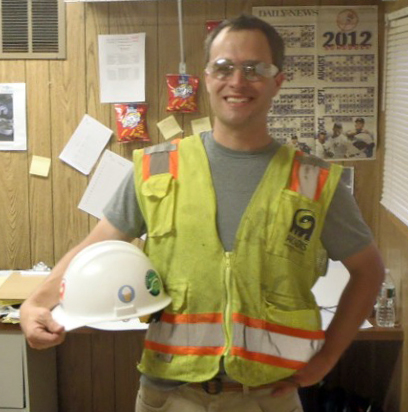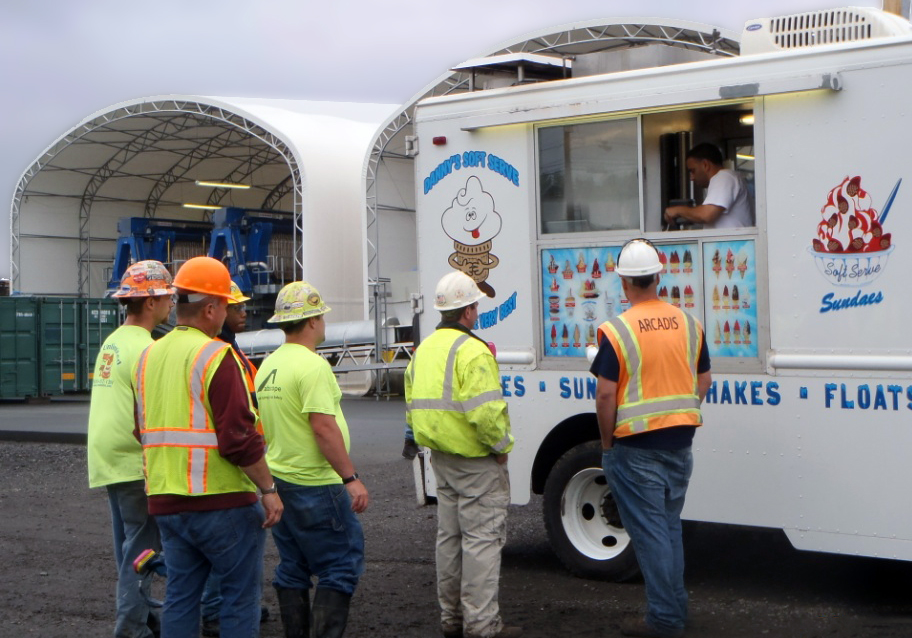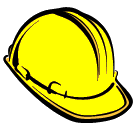Community Health & Safety

I Scream for Safety
Lead Health & Safety Officer Zach McCoy emphasizes a focus on safety at the Phase I Removal Area and at the Upland Processing Facility through the I Scream for Safety program. Zach reinforces this theme by handing out ice cream cone stickers to workers exhibiting good safety behavior. These stickers are attached to all of the parking passes used by workers at the Upland Processing Facility, and are highly visible at the site.

Zach also wears an ice cream cone sticker on his hard hat (right) to promote this safety culture. To celebrate the exemplary Health & Safety record for the site (over 114,000 man hours at the completion of dredging activities), an ice cream truck dispensed soft ice cream cones to all the workers at the Upland Processing Facility and the Phase I Work Area (below).
This program is a simple and effective way to remind workers of a daily commitment to safety during the Phase I Removal Action.
Each of the three primary subcontractors at the Phase I Work Area and Upland Processing Facility also have a behavioral-based program, separate from the I Scream for Safety program. These types of programs with reinforcement activities go a long way to maintaining compliance, implementing policies and procedures, and fostering an overall culture of safety throughout the project.

![]()
Community Health and Safety Plan
Community health and safety is a primary goal of the Phase I Removal Action. As further described in the project Community Health and Safety Plan (CHASP), below are a few examples of health and safety measures in place during the project:
- Trucks will stay on designated routes that avoid residential areas, schools, and parks. Sediment will be transported out-of-state by railroad in sealed containers.
- In-river work will be limited to daylight hours to help reduce noise, traffic, and project-related light. Where possible, equipment has been selected with noise reduction in mind.
- Air monitoring will be conducted to confirm that project-related odors are not discernable beyond work areas. Sediment and debris odors at the Phase I Work Area will be controlled through the use of water, covers, odor suppressant, and/or odor masking spray.
- Navigation aids such as buoys and signage will be deployed to inform and direct mariners and boaters away from work areas and project vessels near Lister Ave and Blanchard Street. Project vessels will travel at a safe speed within established transit routes designed to avoid other maritime traffic to the extent possible.
Have questions or concerns? Contact us through CHIRP.


